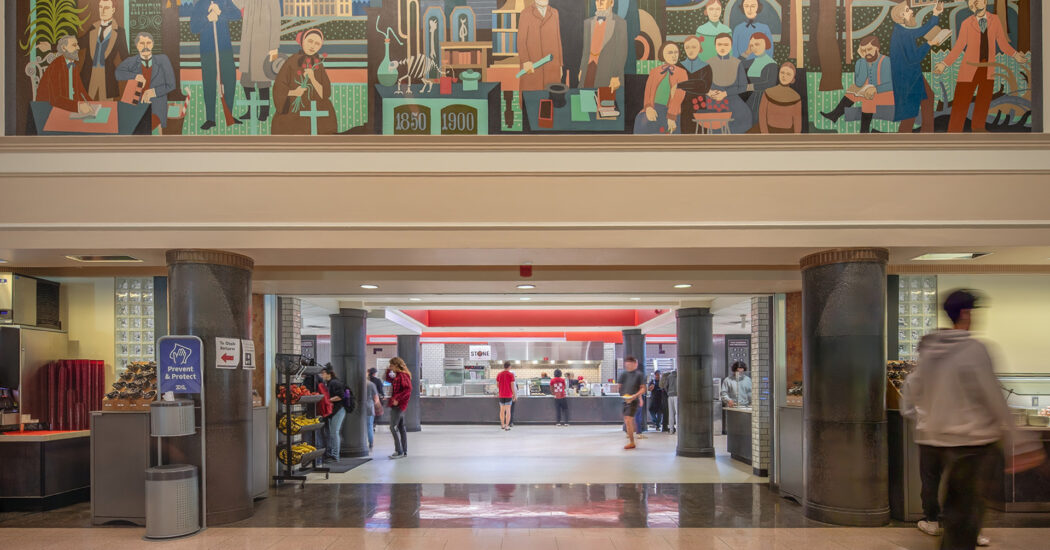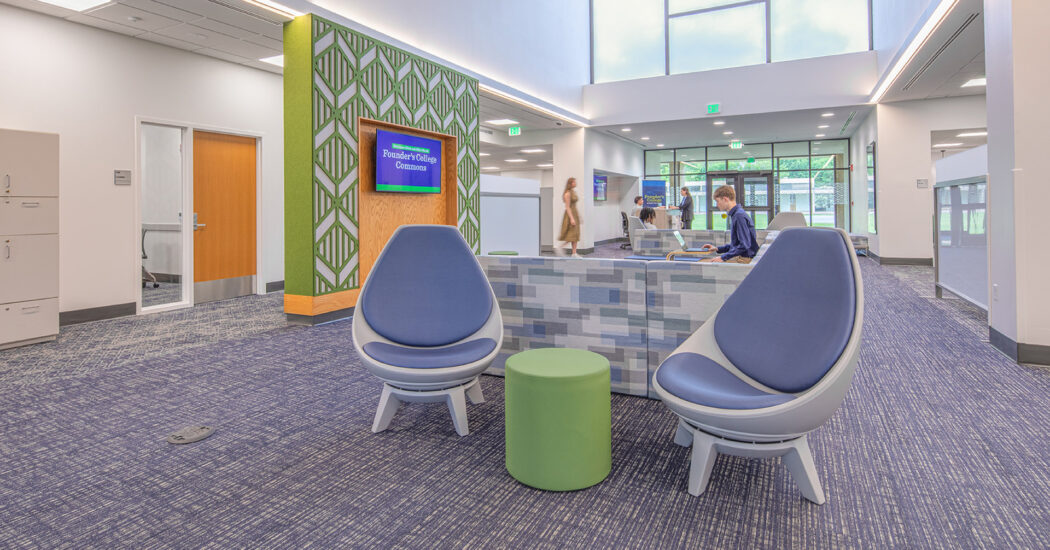Coming Home to College
-
Category
Studio-Higher Ed -
Posted By
Sarah Hempstead -
Posted On
Sep 27, 2016
40 years ago, college accommodation was a lot more basic. If not always actively uncomfortable, most boomer graduates have tales of stubborn damp patches, odd smells, and of gurgles and groans from antiquated infrastructure. Today’s undergraduate and graduate populations have much higher expectations, of a home away from home. What are the design and building challenges that these expectations bring?
There is no doubt that, if not the sole deciding factor, the quality of residential accommodation plays a significant role in the decision making process when it comes to choice of school. ICEF, a global leader in networking events and services in the international education sector, has suggested that student accommodation trends and their level of importance in turning student interest into an application reflect two significant aspects.
- Schools that offer housing may have an advantage when it comes to attracting the international students who both enrich college life and, it has to be said, do no harm to college funds.
- ICEF states, a variety of studies from U.S. universities indicate students who live on campus are more involved in campus life, exhibit a lower dropout rate, and, significantly, perform at a higher academic level than off-campus students.
So it may be reasonable to conclude the good old dorm has a key role to play in sustaining the academic, social and financial life of the campus. However, if some of the more exaggerated reports on campus life in the media are to be believed, that “good old dorm” has given way to a frenzy of luxury accommodations building, designed to give students a “lifestyle” as opposed to the learning opportunity of a lifetime.
At Schmidt Associates, our experience is not creating theme parks and condominiums to enable the campus to stand out in the real estate stakes. However, we have worked extensively with a number of higher education institutions to create the kind of accommodation that sets them positively and sustainably apart.
What has that experience taught us?
The true challenge of either building a new or renovating an existing residential facility is not resolved by incorporating excess. Grounded institutions realize at a strategic level that accommodation, although important, is one element in a decision process that includes many other factors, not least institutional reputation, standard of education, and success enjoyed by alumni.
Across all these criteria, the key word is “quality”. And for undergraduates and graduate students, as for most of us at any stage in life, true quality is not guaranteed by transient appeals and unnecessary luxuries. Instead, quality campus residential accommodation is about creating spaces that become real and personal places in the daily experience, and then later on in the fond memories of students. How does that translate into an architectural approach?
The first rule is that education institutions don’t look “institutional”. A true sense of home has a lot to do with scale. It’s hard to envision your “home” for the next and formative phase of your life as an anonymous cell in an oversized hive. So we design on a human scale.
Our second piece of lasting learning is residence halls that are residence halls alone do not socially work well. The very term “dormitory town” has become a derogatory term precisely because of its connotations of social isolation, lack of amenities beyond preparing to go back to work, and general joylessness. If the only reason to return to your ‘dorm’ is to sleep – or maybe finally give in and do some laundry – it’s not an appetizing prospect at any age. It is still less appealing in ones late teens and early twenties. Residence halls need more of a purpose than sleep alone. That’s why we build in spaces for socializing and shared experience that can range from comfortable lounges for relaxation through to a fully-fledged performance area.
Our third experience in recent years, and perhaps the greatest contrast of all with the needs of four decades ago, is the infrastructure demands of personal information technology. The single lounge boasting a color television set might have been at the cutting edge for the boomers now is a museum piece. One reality that campus planners cannot safely overlook is the need to make sure that connectivity is enabled throughout the building. The technology and infrastructure demanded by an “always on” society must, literally be accommodated.
This need should be balanced with a realization that most campus residents do not want their student social life to be supplied by social media alone. People like meeting and interacting with other people, and never more so than on campus. The best-designed residence halls enable and encourage them to do so. Real life, not “lifestyle”, is their objective. Achieving that objective lends the campus a uniquely human quality and helps achieve the higher social purpose of higher education.
Check out some of our residence halls projects on our Lifestyle page or Higher Education page







